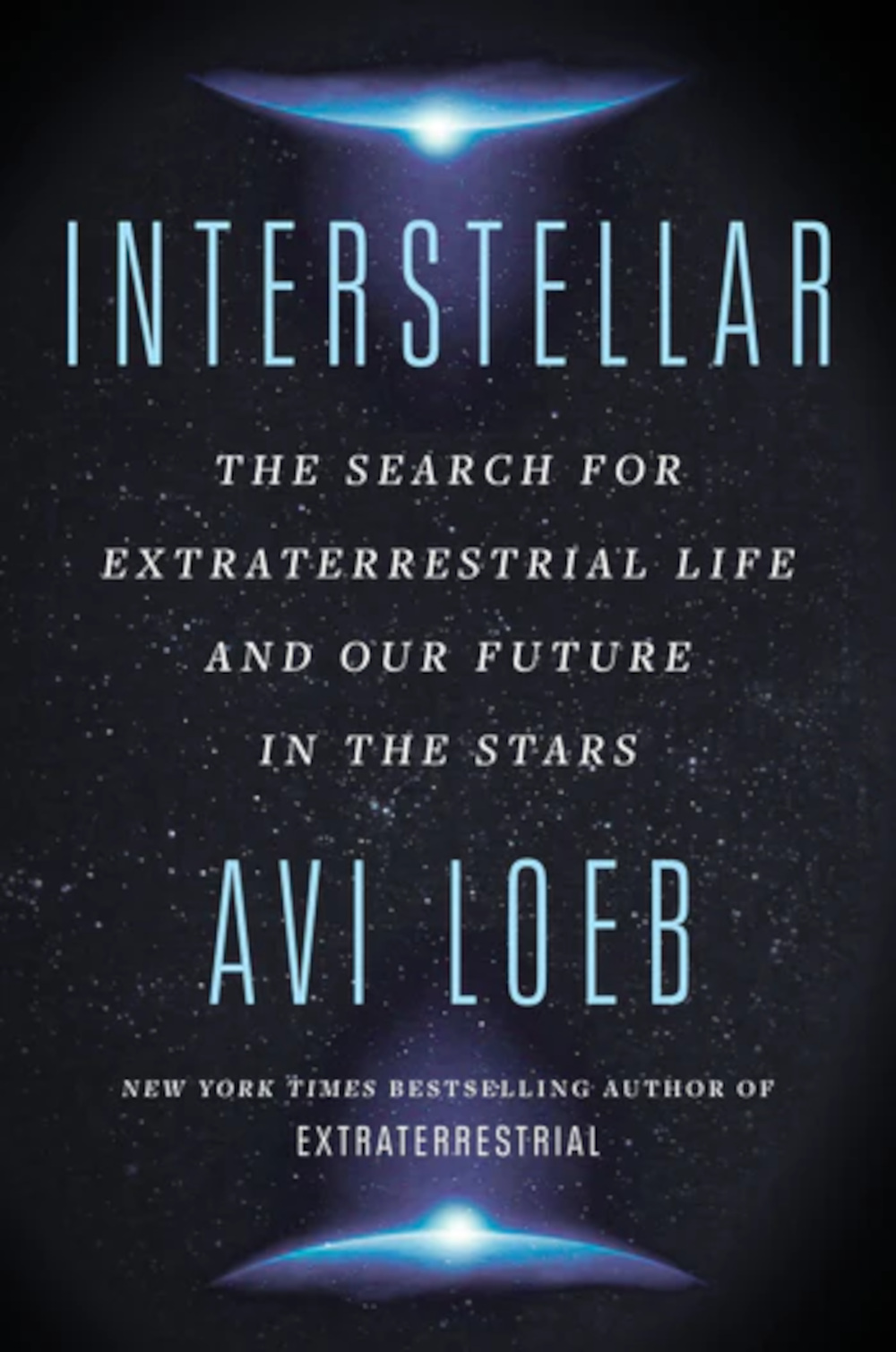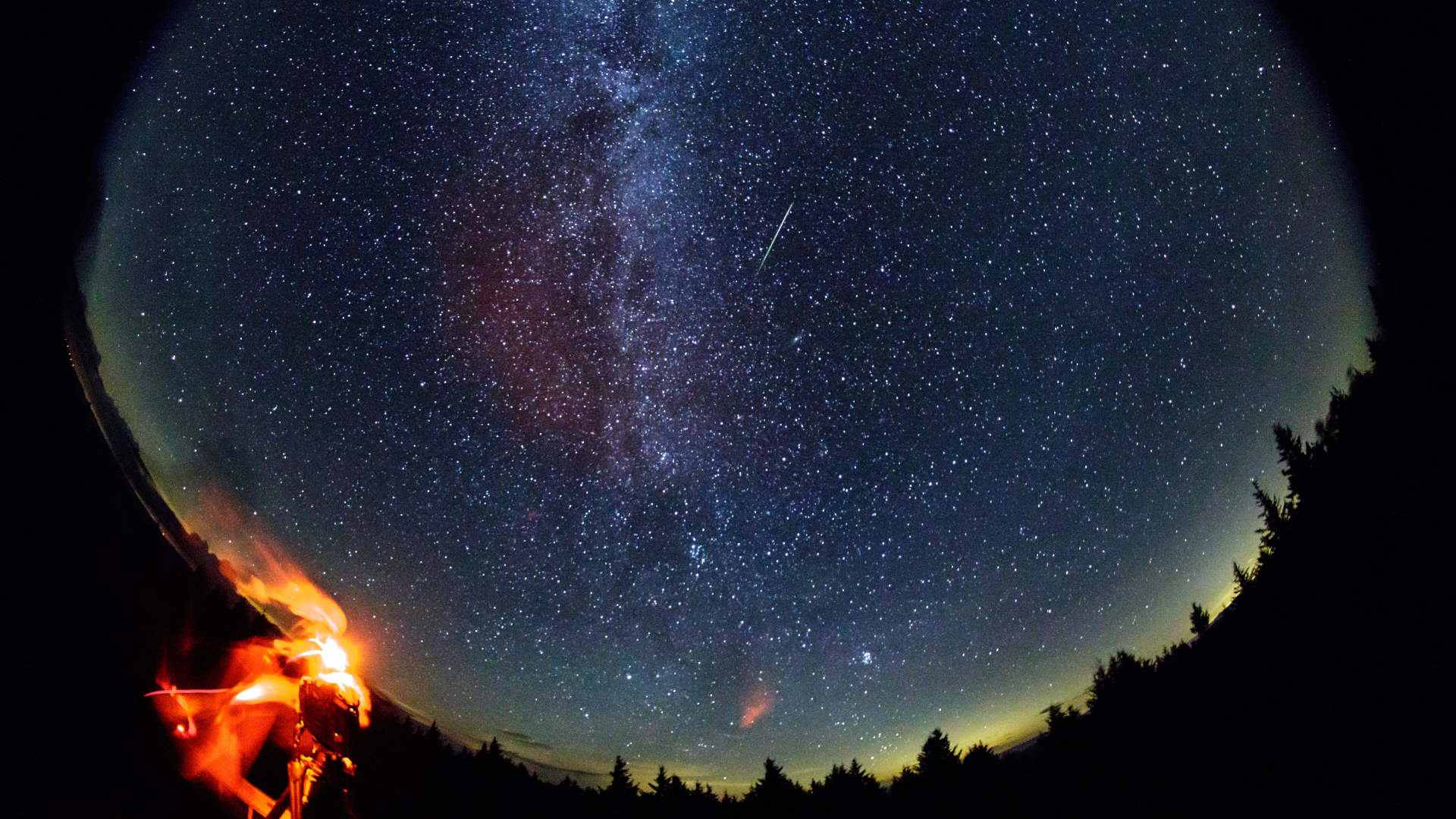Back in 2017, a strange object tumbled into the solar system. It was cigar-shaped and possibly more than 1,000 feet long, made of material scientists couldn’t quite discern, moved too fast to be from around these parts, and sped up on its way through the inner solar system. One thing was clear, though: The object, dubbed ‘Oumuamua — which means “messenger” or “scout” in Hawaiian — by the scientists who first detected it, came from a different star system.
The astronomical consensus was, and continues to be, that there was a natural explanation for the object, whether it was a comet from the great beyond or a piece of a distant planet severed during some collision.
But as with most things astronomical, there were vocal dissenters, most prominently Avi Loeb, a professor at Harvard University and the former chair of the university’s astronomy department.
When ‘Oumuamua appeared, it knocked Loeb into a new intellectual and philosophical orbit. What if, he wondered, the best explanation was that the intruder was not an interstellar ice rock after all, but an example of alien technology, hewn by a far-away civilization? That idea became the premise of his 2021 book, “Extraterrestrial: The First Sign of Intelligent Life Beyond Earth.”

BOOK REVIEW — “We’ve Got You Covered: Rebooting American Health Care,” by Liran Einav and Amy Finkelstein (Portfolio, 304 pages).
Two years later, Loeb is back with an extension of his out-there thesis. In “Interstellar: The Search for Extraterrestrial Life and Our Future in the Stars,” he claims that a search for physical evidence of alien technology within our solar system represents not just an interesting scientific pursuit but also one that will elevate our species, perhaps by connecting it to more advanced cosmic civilizations. Or as he puts it in the epigraph, “I am seeking to learn from a higher intelligence in outer space what we could aspire to be.”
The best way to do that, Loeb argues, is by seeking out interstellar objects whizzing through space, UFOs within Earth’s atmosphere, and alien relics that may have fallen to the ground or into the sea.
That “grand ambition,” Loeb writes, could “jolt us out of our current complacency” and steer us to become a more evolved civilization, eventually becoming “capable of producing a baby universe in a laboratory.”
Conveniently, Loeb already has a plan to make that happen: the Galileo Project, a three-pronged search for evidence of alien life in the universe that he founded in 2021. This privately funded project, based at Harvard, aims to launch space missions to intercept objects like ‘Oumuamua and hunt for space rocks that may have come from beyond our solar system, and it has already built an observatory to gather data on UFOs, also known today as UAP, or unidentified anomalous phenomena. “We must commence a planet-wide search for curiosities,” he writes with urgency.
In a quest to track down those curiosities, Loeb and his team have begun searching for the remains of interstellar meteorites (the pieces of meteors that make it to Earth’s surface). Just as ‘Oumuamua could be an example of aliens’ advanced technology, Loeb’s thinking goes, material that comes from beyond the solar system and fires itself through Earth’s atmosphere could be extraterrestrial artifacts, whose pieces might litter land and sea.
So far, scientists know of just two interstellar meteors that streamed through the Earth’s atmosphere — discoveries Loeb himself made. “Both of them, the data show, are built of far tougher materials than the vast majority of space rocks that originate in our Solar system,” he writes. “And one of those two awaits our recovery, resting at the bottom of the Pacific Ocean just north of Manus Island” in Papua, New Guinea. The other, detected in 2017, “scattered its fragments in the waters off Portugal,” Loeb writes.
In “Interstellar,” he imagines in detail what a future expedition to find remnants of the first space rock, which hit the Earth in 2014, might look like, with the hope that the pieces reveal “something discernably of extraterrestrial manufacture propelled by artificial means.” (Loeb anticipates the remnants near Portugal would be more difficult to recover.)
In fact, that expedition — a seafloor-scraping journey whose updates Loeb sent to a giant screen in Times Square — actually took place earlier this year, after the book was finished. Loeb returned with some goods, which he claimed were meteorites from the space rock: spherules that, in August, he also claimed were interstellar in origin, based on their chemistry. Other scientists have their doubts, and some point out that Loeb can’t definitively link the objects to the fiery meteor at all.
Unfortunately, because of the timing of the expedition, there’s nothing about the journey or its results, although that would have created the narrative tension (or, really, the narrative of any sort) that “Interstellar” lacks.
Instead, the book is a fairly disorganized, rambling affair whose topics and metaphors leap wildly to and fro. In the span of two pages, for instance, Loeb moves from Plato’s Allegory of the Cave to the scientist who discovered the composition of stars to sunlight reflecting off the Moon to a solar telescope in Hawaii to the Parker Solar Probe in space to quantum tunneling (don’t ask) to Sisyphus and Albert Camus. That light-speed zigzagging distracts from the insights that eventually emerge.
And they do: Loeb makes solid points about how modern science works, and could work better. For instance, he points to the existence of classified data, including some on unidentified whatsits in the sky and information about his interstellar meteors, that was initially closed-off, and whose secrecy makes scientific inquiry difficult or impossible. He also speaks to academic dynamics that stifle novelty. “Human history across all domains overflows with examples of experts suppressing innovation because it threatens their pride, their professional reputations, and their self-esteem,” he writes.
The book also explores some interesting philosophical ideas, like the nature of what we consider a god, what the meaning of existence might be, and how science relates to spirituality.
Along the way, Loeb encourages young scientists to pursue meaningful research topics that will make a difference to the public that, after all, funds their work. “It could be moderating climate change, developing streamlined vaccines to pandemics, satisfying our energy or food needs, establishing a sustainable base in space, or finding technological relics of alien civilizations,” he writes.
At least one of these things is not like the other, and it’s clear Loeb — who sees those relics as humanity’s potential salvation — becomes so caught up in making his argument that he fails to see its flaws. One of these rhetorical flaws is taking an idea beyond the supporting data. “It is very likely that Albert Einstein was not the smartest scientist that has lived in the Milky Way since the Big Bang,” he writes, for example. “Rather, it is likely that smarter scientists resided on an exoplanet around another star and the civilization that benefitted from their wisdom launched probes into space a billion years ago.”
There’s value in thought experiments, what-ifs, and shaking up academic conformity when it’s not adequately backed by data. But current scientific understanding doesn’t support the base of Loeb’s ideological pyramid. We actually have, in fact, no direct evidence of biology beyond Earth at all, let alone evidence that intelligent alien civilizations have encountered each other’s probes.
Scientists haven’t been able to prove how life started on this planet, so no one knows the rarity of conditions that lead to life, or to technologically advanced intelligence. They could be so rare that even considering the vastness of the universe, life itself is also rare. Loeb admits this possibility in passing, but doesn’t engage with it seriously.
Support Undark MagazineUndark is a non-profit, editorially independent magazine covering the complicated and often fractious intersection of science and society. If you would like to help support our journalism, please consider making a donation. All proceeds go directly to Undark’s editorial fund.
|
Still, Loeb’s fervor for interstellar archaeology makes sense when you consider his motivation: He believes the kind of technology and philosophy humans could gain from an advanced civilization could save our species from extinction.
And extinction, as opposed to intelligent life in the universe, is a near-certainty. Maybe it’s nukes, or climate change, or a nearby gamma-ray burst, or an asteroid collision. Should we avoid all those, the Sun will eventually expand and heat us and Earth out of existence. Maybe we’ll travel to a more hospitable world in time to avoid that, but many (many) years later, the universe itself could, for instance, die a long, cold death by expansion or a shorter hot death by contraction.
Should humanity be able to go to other stars in that middle era, however, and then create brand-new universes when this one’s on its last limbs, cosmic immortality is within reach. Learning of, and from, advanced aliens could push earthlings in that direction. “Perhaps we will participate in a cycle, virtuous or not, of sentient intelligence rising to the level of birthing more sentient intelligence,” Loeb writes, “some of which eventually arise to the point of birthing another universe.”











Comments are automatically closed one year after article publication. Archived comments are below.
Terrific review of Loeb’s latest book, which I haven’t read. I did read his book, Extraterrestrial: The First Sign of Intelligent Life Beyond Earth, and although I approached it with great skepticism, I ended up thinking he made a good case that Ouamoua is a light sail–the type of technology that we are likely to use to get a close look at extrasolar planets soon enough that I might actually see the day.
But I’m hugely skeptical that our species will ever meet up with intelligent extraterrestrials. I suspect that single celled life is not uncommon in the universe, or even in the galaxy, but that multicellular life is exceedingly rare in the universe. While single celled life appeared on earth almost as soon as conditions made it possible, it took another 3.5 billion years or so for multicellular life to appear. And the distances even within the galaxy make travel to potentially life bearing planets extremely unlikely–which if there is other intelligent life in our galaxy, is why we haven’t encountered evidence of it’s having visited our planet.
I don’t see us settling other planets that don’t already have multicellular life, including plants and animal that we could eat. Ecosystems are too complex for us to transport enough multicellular terrestrial life to seed some distant planet, and thus, the sort of terraforming that Elon Musk alludes to doing on Mars will remain science fiction.